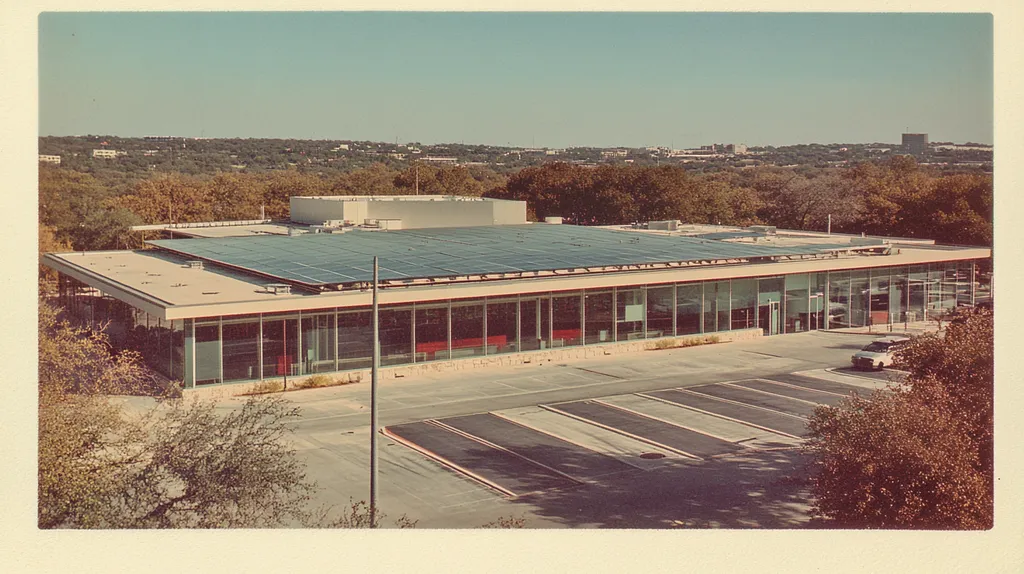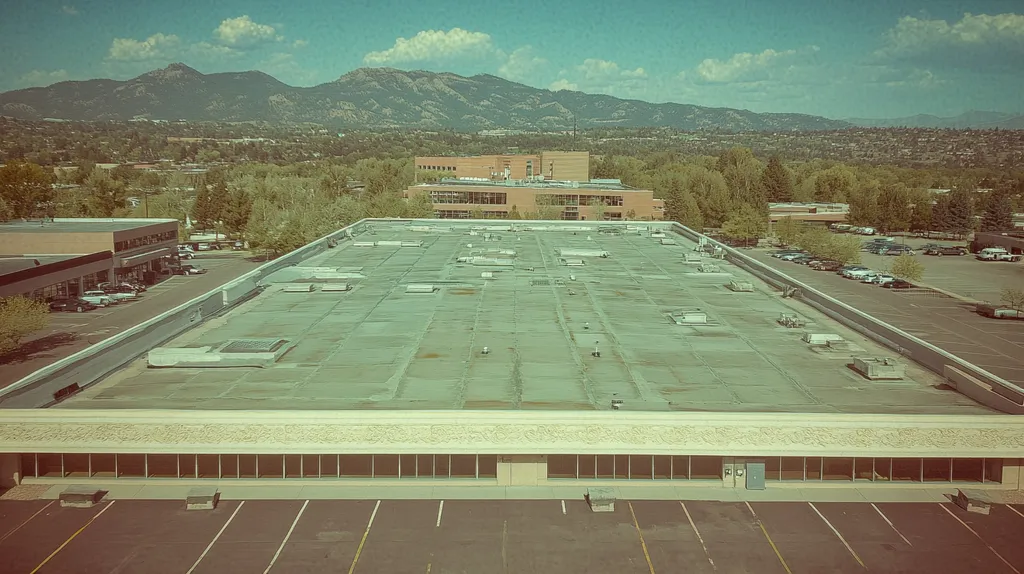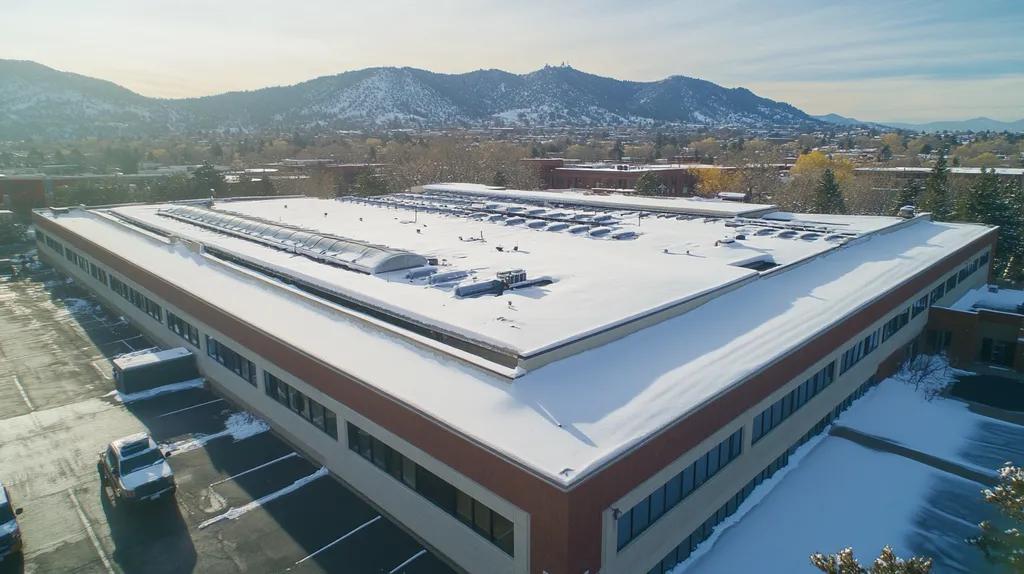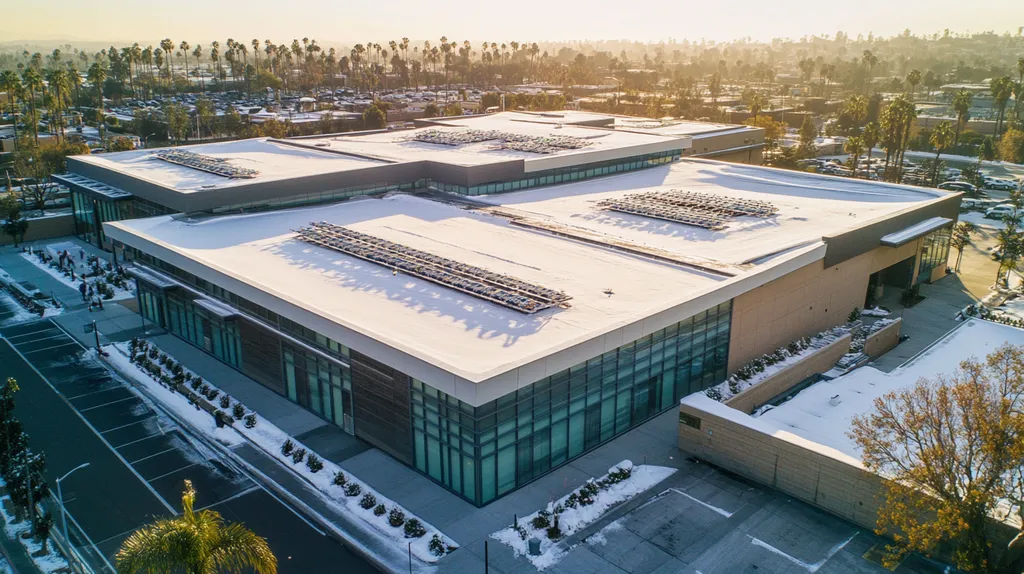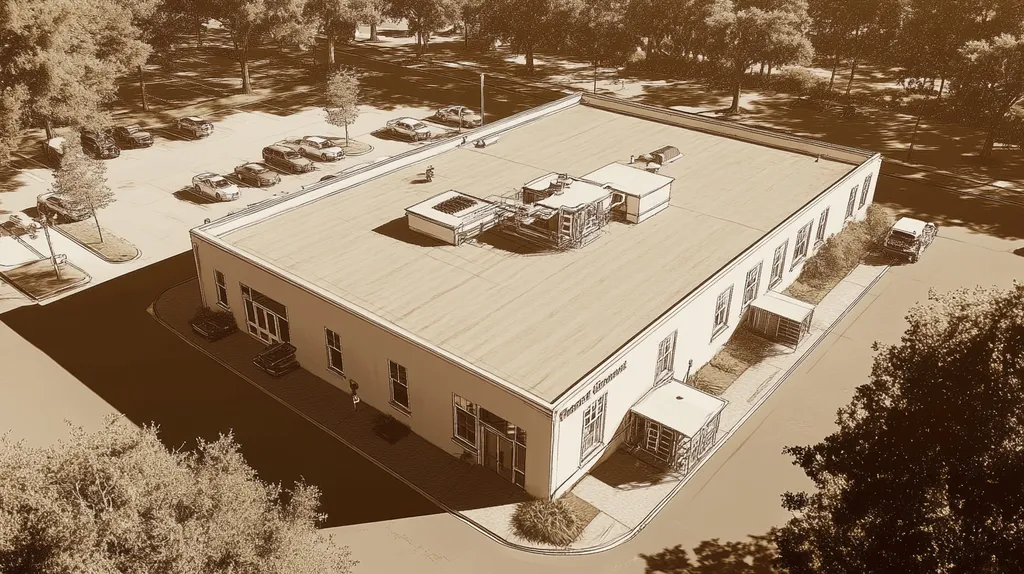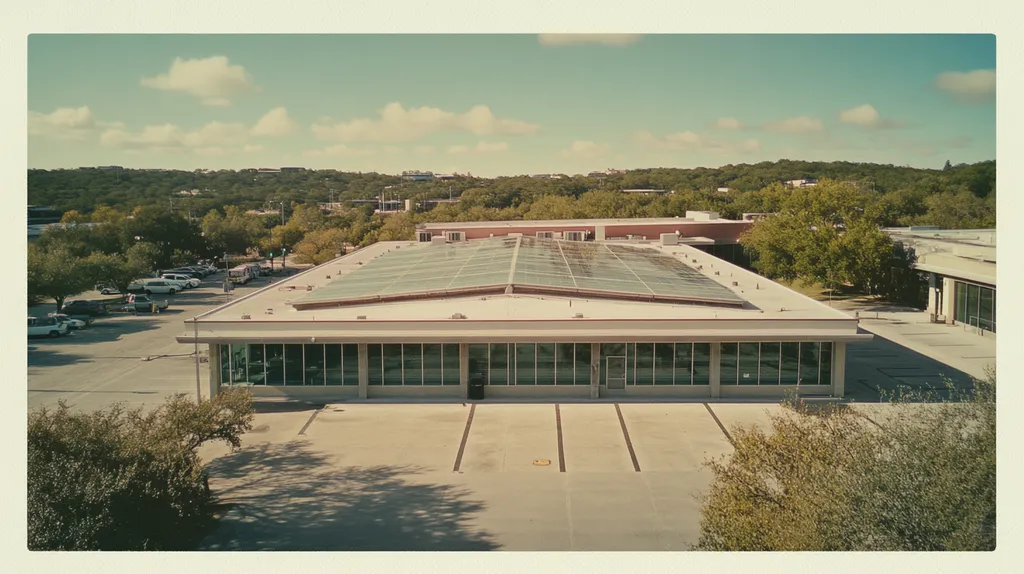Each year, commercial property owners lose millions to pest-related roofing damage, with studies showing up to 40% of buildings experiencing some form of pest intrusion through their roofing systems. These infestations not only compromise structural integrity but also lead to costly repairs and potential health code violations.
The selection of pest-resistant roofing materials has become a critical factor in protecting commercial investments. Modern solutions range from treated membranes to specialized coating systems, each offering distinct advantages in pest prevention.
This guide examines essential factors in material selection, cost implications, and implementation strategies that facility managers need to consider when enhancing their roofing systems’ pest resistance.
SECTION 1: PERFORMANCE FACTORS
Pest infestations pose a significant threat to commercial properties, affecting not only the building’s structural integrity but also tenant satisfaction and overall financial health. Research shows that up to 20% of commercial roofs face pest-related issues. Understanding the connection between material properties and pest resistance is vital for facility managers aiming to protect their assets. This section delves into the essential factors impacting pest resistance, including the characteristics of materials, potential pathways for pest intrusion, and how durability and weathering affect pest resilience.
Material Properties Impacting Pest Resistance
The selection of roofing material is integral to its effectiveness in deterring pests. Materials like metal and specific synthetic membranes naturally resist insect penetration better than traditional asphalt. For example, metal roofs are less inviting for pests to nest, creating a robust barrier against infestations.
Moreover, roofing materials with smooth surfaces minimize opportunities for pests to establish themselves. Conversely, textured or porous materials can retain moisture, turning them into an inviting habitat for pests. Facility managers should prioritize selecting materials specifically designed to resist pest intrusion.
In addition to the surface texture, chemical treatments can further bolster material resistance. Many roofing products come pre-treated with pest-repellent solutions, significantly boosting their effectiveness against infestations. Regular maintenance is key to retaining these protective properties throughout the roof’s lifespan.
Key Action Items
Evaluation of Pest Intrusion Pathways
Understanding how pests infiltrate roofing systems is vital for mitigating risks. Common entry points include gaps around vents, HVAC units, and other rooftop installations. Often, facility managers overlook these vulnerabilities during inspections, leaving roofs exposed to potential infestations.
Conducting regular assessments of intrusion pathways can help catch problems early. For instance, visual inspections can identify cracks or openings that might allow pests to enter. Sealing these gaps with caulk or sealants can significantly strengthen the roof’s defenses.
Furthermore, maintaining effective drainage systems can prevent moisture accumulation, a primary attractant for pests. Ensuring that water is directed away from the roof and does not pool can limit pest activity. Constructing barriers around drains can also help keep pests at bay.
Key Action Items
Durability and Weathering Effects on Pest Resistance
The durability of roofing materials is crucial for sustaining pest resistance over time. Various weather conditions can deteriorate materials, creating possible entry points for pests. For instance, UV radiation can break down some membranes, while moisture can cause materials to swell or crack.
Facility managers need to assess how different roofing materials perform in specific climates. Some roofing solutions are engineered to endure harsh conditions, preserving their structural integrity and pest resistance longer. Comparing the longevity and performance of materials across various environments can guide informed selections.
Regular maintenance—such as inspections and necessary repairs—is vital to prevent material degradation. Even minor damages can open the door for pests, highlighting the value of a proactive roof care strategy.
Key Action Items
SECTION 2: FINANCIAL CONSIDERATIONS
For commercial property owners, overlooking pest resistance in roofing materials can lead to steep financial consequences. Research indicates that pest-related damages can result in repair costs soaring into the thousands, along with disruptions that can hinder business operations. Gaining an understanding of the financial implications associated with pest-resistant materials is essential for making informed choices that safeguard roofing investments.
Cost-Benefit Analysis of Pest-Resistant Materials
While investing in pest-resistant roofing materials may seem costly initially, a detailed cost-benefit analysis highlights significant long-term savings. By selecting materials engineered to deter pests, property owners can diminish the likelihood of infestations that could lead to extensive damage and expensive repairs.
For example, facilities using vinyl membranes designed with pest resistance often experience reduced maintenance costs over their lifespan. In comparison, traditional roofing requires more frequent repairs due to pest-related issues, making the advantages of long-lasting materials clear when weighing initial costs against overall benefits.
As an illustration, consider a business spending $50,000 on a standard roof that incurs $10,000 in repairs every five years from pest damage. In contrast, a $60,000 investment in pest-resistant materials could eliminate those repair costs for decades, showcasing a clear financial edge.
Key Action Items
Long-Term Maintenance Expenses Linked to Pest Damage
Pest infestations can incur a variety of hidden costs that often go unnoticed until significant damage occurs. Regular maintenance and thorough inspections aid in mitigating these risks; however, neglecting pest resistance can exacerbate long-term financial burdens. Property owners not only face direct repair costs but also experience indirect costs such as operational downtime and possible loss of clientele.
For instance, a facility dealing with a rodent infestation may incur urgent repair costs, which can halt operations and lead to decreased productivity. Such interruptions burden businesses with extra expenses as they navigate alternative accommodations or revenue losses during necessary repairs.
Additionally, damage may extend beyond just the roof, potentially compromising insulation and underlying structures. These cascading issues can inflate maintenance bills and lead to costly replacements—expenses that could have been avoided with an initial investment in pest-resistant materials.
Key Action Items
Budgeting for Upfront vs. Lifecycle Pest Mitigation
When formulating a roofing budget, facility managers must balance initial costs against potential lifecycle expenses. Although pest-resistant materials may cost more upfront, they turn out to be more economical when evaluating the entire lifespan of the roof.
Lifecycle costing encompasses the purchase and installation of roofing materials along with expected maintenance, repairs, and operational effects throughout their lifespan. A company may choose a cheaper option requiring ongoing maintenance, which can lead to higher costs over a ten-year period than the pest-resistant alternative.
Moreover, incorporating pest resistance not only ensures effective roof maintenance but contributes to the overall sustainability of the facility. Buildings that manage their roofs effectively experience fewer disruptions, enabling better resource allocation across the organization. Making prudent investments in roofing can protect financial assets and enhance long-term operational efficiency.
Key Action Items
SECTION 3: COMPLIANCE REQUIREMENTS
In the ever-evolving landscape of building regulations, ensuring compliance with pest control standards is crucial for commercial properties. Ignoring these standards can result in costly damages and liabilities. Facility managers need to stay updated on regulatory codes, environmental guidelines, and the necessary documentation for pest-resistant roofing materials to avoid significant repercussions.
Regulatory Standards for Pest Control in Roofing Materials
Awareness of regulatory standards is vital for effective pest management through roofing materials. Various codes, including the International Building Code (IBC), outline requirements for pest-resistant materials, dictating accepted types and specific features to enhance pest resistance.
Facility managers must regularly review these standards to ensure selected roofing materials are both durable and compliant. Non-compliance can lead to fines and greater liability risks. It’s essential to stay informed about changing regulations to maintain ongoing compliance.
For example, some regions mandate the use of treated materials specifically designed to deter pests. Ignoring these requirements can incur significant costs for necessary adjustments down the line.
Key Action Items
Environmental and Health Codes Affecting Material Selection
Environmental and health codes significantly influence the selection of roofing materials that offer pest resistance. Facility managers must consider both the potential impact on human health and the environment when choosing materials.
Many roofing options need to satisfy not only pest resistance criteria but also regulations set by organizations like the Environmental Protection Agency (EPA). Some chemical treatments that confer pest resistance could compromise indoor air quality or violate local environmental regulations.
Selecting roofing materials labeled as low-VOC or eco-friendly enhances pest resistance while adhering to health and environmental guidelines. Such choices underscore a commitment to sustainability and improve overall building performance.
Key Action Items
Documentation and Verification for Pest Resistance Compliance
Maintaining proper documentation is essential for verifying compliance with pest resistance requirements. Facility managers should keep accurate records of all roofing materials, including certifications that affirm their pest-resistant qualities.
Such documentation is vital not only for compliance audits but also for future renovations or inspections. Various certification programs exist to confirm roofing materials meet specified pest resistance benchmarks.
Additionally, thorough records of inspections and maintenance actions can substantiate ongoing compliance. This documentation is essential for claiming warranties, which often require proof of appropriate installation and upkeep.
Key Action Items
SECTION 4: RISK MANAGEMENT
Pest infestations are a serious concern for the integrity of commercial roofing systems. Pests like termites, rodents, and birds can inflict substantial damage, leading to expensive repairs and service interruptions. Studies reveal that over 30% of facility managers have encountered pest-related challenges, underscoring the urgent need to tackle these vulnerabilities. Implementing proactive risk management strategies is essential for preserving investments in roofing materials. This section outlines effective methods for identifying vulnerabilities, assessing risks, and planning for possible infestations.
Identifying Pest-Related Vulnerabilities in Roofing Systems
The first crucial step in effective risk management is identifying weaknesses within roofing systems. Materials such as wood and organic components are particularly vulnerable to pests, while exposed insulation and gaps in seams serve as potential entry points. Regular inspections are essential to uncover these vulnerabilities.
Thorough visual assessments can help detect signs of infestations, including droppings or nesting materials. Particular attention should be given to areas around vents, drains, and gutters, as these spots are often attractive to various pests. Establishing routine maintenance protocols will further reduce the chances of pest infestations.
Strong communication with roofing contractors ensures that all vulnerabilities are addressed during periodic assessments. By continuously identifying and sealing potential entry points, facility managers can significantly lower the risk of pest-related damage.
Key Action Items
Risk Assessment Protocols for Pest Infestation
Establishing rigorous risk assessment protocols is vital for managing pest-related risks effectively. A complete approach should encompass both qualitative and quantitative evaluations. Facility managers must analyze historical pest data, assess current environmental conditions, and identify structural vulnerabilities for an accurate risk assessment.
Modern technology can aid in monitoring pest activity and pinpointing environmental issues conducive to infestations. For example, using moisture sensors can reveal high moisture areas that attract pests. Consulting pest control specialists for precise risk assessments can also yield valuable insights.
Regularly reviewing assessment findings helps keep the risk management strategy current and responsive to new challenges or pest threats. This ongoing vigilance is key to effective pest management.
Key Action Items
Contingency Planning for Pest Damage and Remediation
Creating a solid contingency plan is crucial for minimizing the impact of pest damage. Facility managers should establish clear action protocols for when infestations occur. Immediate responses might include sealing entry points and contacting pest control services to address the issue effectively.
Additionally, a communication plan that informs all relevant stakeholders about their responsibilities during a pest emergency is essential. Quick notifications to tenants, employees, and authorities can help reduce disruption and damage.
Integrating insurance policy reviews into contingency planning offers financial protection against unforeseen extermination and repair costs. Consistent discussions with insurance providers can ensure sufficient coverage for pest-related damages.
By developing and constantly updating an effective contingency plan, facility managers can better protect their properties from the challenges posed by pests.
Key Action Items
SECTION 5: OPERATIONAL PROCEDURES
To effectively maintain a pest-resistant commercial roof, systematic operational procedures are essential. Without diligent inspections and robust maintenance routines, properties risk infestations that can threaten roof integrity and incur hefty repair costs. For instance, a single rodent can inflict tens of thousands of dollars in damage by gnawing through insulation. This section details critical inspection methods, maintenance protocols for enhancing material resistance, and the necessity of partnering with pest control professionals.
Routine Inspection Methods for Pest Intrusion Signs
Conducting routine inspections is vital for catching pest intrusion early. Facility managers should perform visual inspections at least twice a year, paying close attention to moisture-prone areas that attract pests. Important focus areas include roof drains, flashing, and penetration points where HVAC systems enter the roof.
During inspections, be on the lookout for droppings, nesting materials, or gnaw marks, as these signs can indicate an incipient infestation. Addressing these early warnings is critical to avoid a larger pest problem that disrupts business operations.
Utilizing technology can significantly enhance the inspection process. Tools like thermal imaging cameras can uncover hidden nests behind roofing materials, while drones equipped with cameras enable efficient surveys of large areas, ensuring a safe and thorough inspection.
Key Action Items
Maintenance Protocols to Sustain Material Pest Resistance
Proper maintenance is crucial for ensuring roofing materials remain pest-resistant. Regular cleaning helps remove debris that can create habitats for pests. It’s essential to keep gutters and drains clear to prevent stagnant water, a magnet for insects.
Regular checks for wear and tear on roofing materials are also necessary. Sealed roofing systems, such as TPO or PVC, should be inspected for punctures or compromised seams. Timely repairs are vital to maintaining the roof’s pest-resistant features.
Applying pest-repellent coatings specifically designed for commercial roofs can enhance their resistance. These products create protective barriers that deter pests while maintaining the roof’s structural integrity.
Key Action Items
Coordination with Pest Control Professionals in Roofing Care
Working closely with pest control specialists enhances a roof’s defenses against infestations. Engaging these experts allows facility managers to gain valuable insights into the most effective materials and designs for local pest resistance.
Pest control professionals provide targeted recommendations based on regional pest threats. For instance, in areas prone to termites, they may suggest materials specifically treated for termite resistance.
Moreover, having a pest control strategy established before an infestation occurs is advisable. An Integrated Pest Management (IPM) approach proactively addresses potential pest issues through structural and material modifications.
Key Action Items
SECTION 5: OPERATIONAL PROCEDURES
To maintain a pest-resistant commercial roof, systematic operational procedures are critical. Without consistent inspections and strong maintenance protocols, property owners invite potential infestations that can undermine roof integrity and lead to significant repair costs. For example, a single rodent can result in tens of thousands of dollars in damage by gnawing through insulation. This section highlights essential inspection methods, maintenance protocols to enhance material resistance, and the importance of working collaboratively with pest control experts.
Routine Inspection Methods for Pest Intrusion Signs
Routine inspections are essential for catching signs of pest intrusion early. Facility managers should conduct visual inspections at least twice a year, emphasizing moisture-prone areas that attract pests. Key focus points include roof drains, flashing, and the entry points where HVAC systems penetrate the roof.
During inspections, keep an eye out for droppings, nesting materials, or signs of gnawing. The presence of these indicators can suggest an infestation at an early stage. Timely addressing these signs is critical to preventing an escalation into a more significant pest issue that disrupts business operations.
Incorporating technology can optimize the inspection process. Tools like thermal imaging cameras can reveal hidden nests behind roofing materials, while drones can efficiently survey expansive roof areas to identify potential problem spots from a safe distance.
Maintaining a detailed inspection log is vital. Documenting findings over time enhances decision-making and supports prompt interventions, effectively lowering the potential long-term costs associated with pest management.
Key Action Items
Maintenance Protocols to Sustain Material Pest Resistance
Regular maintenance of roofing materials is key to upholding pest resistance. Frequent cleaning is necessary, as debris accumulation can create ideal habitats for pests. It is also crucial to ensure that gutters and drains are cleared to prevent standing water, which attracts insects.
Regular checks should be done for signs of wear and tear on roofing materials. Sealed roofing systems, such as TPO or PVC, should be scrutinized for punctures and compromised seams. Addressing any anomalies immediately can help maintain the roof’s pest-resistant features.
Additionally, applying pest-repellent coatings specifically designed for commercial roofs can further enhance resistance. Such products create protective barriers that deter pests without compromising the structure of the roof.
Creating an annual maintenance schedule that encompasses inspections, repairs, and preventive treatments will help sustain the effectiveness of the roof’s pest-resistant qualities. Consistent care ultimately prolongs the roof’s lifespan and minimizes pest-related disruptions.
Key Action Items
Coordination with Pest Control Professionals in Roofing Care
Partnering with pest control professionals strengthens a roof’s defenses against infestations. When facility managers collaborate with pest control experts, they gain valuable insights about materials and design features that optimize local pest resistance.
Pest control specialists can offer tailored recommendations based on regional pest challenges. For instance, in areas susceptible to termites, experts might suggest specific materials treated to resist these pests.
Having a pest control strategy established before an infestation occurs is advantageous. Employing an Integrated Pest Management (IPM) approach can proactively mitigate potential pest problems through strategic structural and material modifications.
Regular consultations with pest control experts facilitate ongoing education for facility managers and ensure they stay informed about best practices for maintaining pest resistance in roofing materials. This strategic collaboration is invaluable for protecting roof integrity.
Key Action Items
Looking Ahead
With pest-related roofing damage costing commercial property owners over $2 billion annually, implementing comprehensive pest-resistant strategies is no longer optional.
The integration of advanced materials, from treated membranes to specialized coating systems, provides facility managers with powerful tools to combat infestations before they start.
Regular inspections, proper documentation, and coordination with pest control professionals form the foundation of an effective pest resistance program.
As building codes evolve and new pest threats emerge, staying informed about material innovations and compliance requirements becomes increasingly critical.
Ultimately, the investment in pest-resistant roofing materials and maintenance protocols protects not just the physical structure, but also the long-term financial health of commercial properties.
FREQUENTLY ASKED QUESTIONS
Q. What performance factors affect pest resistance in commercial roofs?
A. The properties of roofing materials, such as smoothness and durability, significantly impact pest resistance. Materials like metal resist insect penetration more effectively than traditional asphalt. Regular maintenance also enhances the roof’s defenses against pests.
Q. How can financial considerations influence commercial roof choices?
A. While pest-resistant materials may have higher initial costs, they can lead to long-term savings. Diminished maintenance and fewer repairs can offset upfront expenses, making financial assessments crucial before making a decision.
Q. What compliance requirements exist for pest-resistant roofing materials?
A. Facility managers should be aware of local regulations and the International Building Code regarding pest-resistant roofing materials. Ignoring these can lead to fines or liabilities, making compliance a critical aspect of property management.
Q. How do I identify pest vulnerabilities in roofing systems?
A. Regular inspections can reveal weaknesses, such as gaps and susceptible materials like wood. Focus on areas near vents and drains where pests may enter, and seal any identified vulnerabilities promptly.
Q. What maintenance protocols enhance pest resistance in commercial roofs?
A. Regular cleaning to remove debris and ensuring gutters are clear helps prevent pest habitats. Frequent inspections and applying pest-repellent coatings also promote roof longevity and resistance against infestations.
Q. Why should I coordinate with pest control professionals for roofing care?
A. Working with pest control specialists ensures tailored recommendations based on regional pest threats. Their expertise helps in selecting materials and strategies to minimize infestation risks effectively.
Q. What additional pest control strategies can improve commercial roofing?
A. Integrating an Integrated Pest Management strategy and utilizing technology for monitoring pests can greatly enhance pest control efforts. These proactive measures, combined with regular inspections, create robust defenses against infestations.

